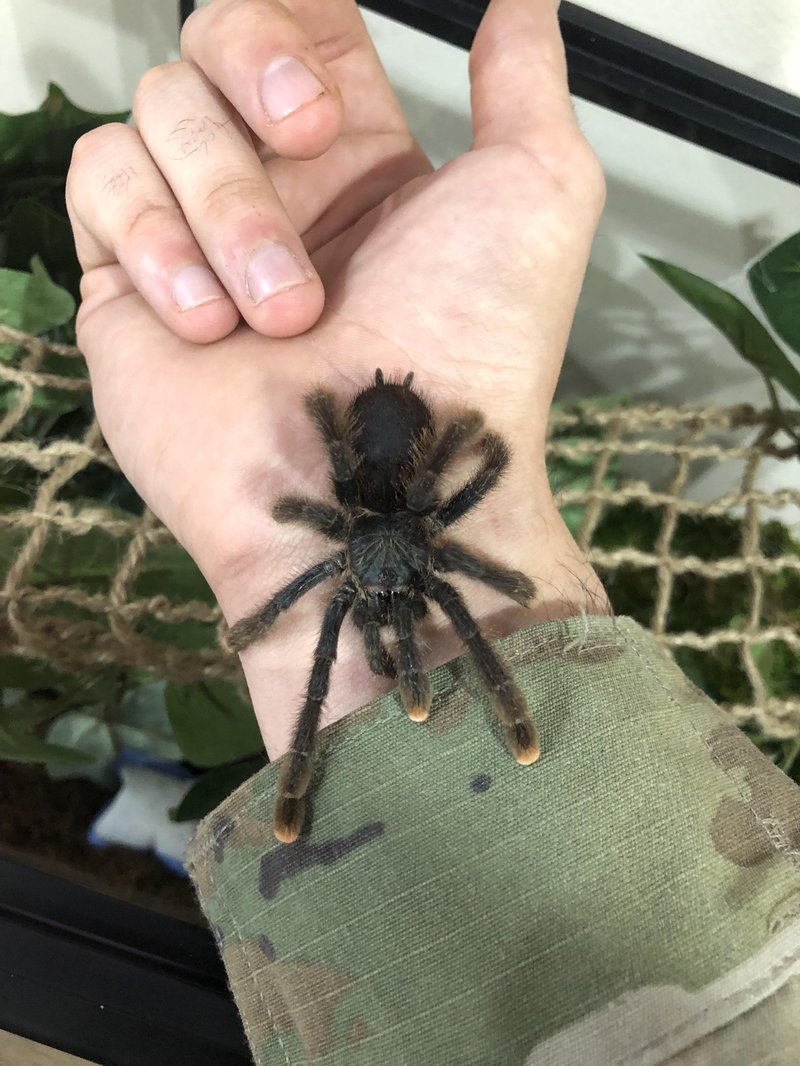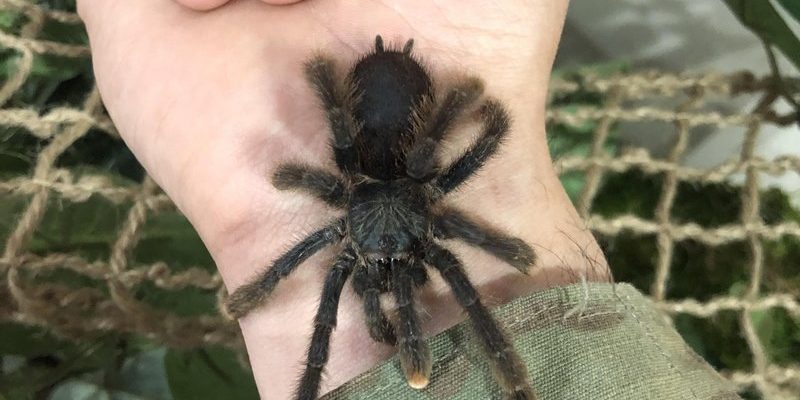
These charming creatures bring a blend of beauty and mystery into their habitats. Imagine having a spider that, unlike most, sports vibrant pink toes and a stunning appearance. You might be wondering, “What exactly makes them stand out?” Well, the Pink Toe Tarantula, or *Avicularia avicularia*, is a great example of how fascinating arachnids can be. They hail from the tropical rainforests of South America, making them exotic but surprisingly approachable for potential owners.
Physical Characteristics of the Pink Toe Tarantula
When trying to identify a Pink Toe Tarantula, their physical traits are hard to miss. First and foremost, they boast gorgeous pink or orange-colored toes. Think of them as fashionable little shoes that highlight their elegance. Their bodies are typically a rich, velvety black or dark brown, providing a stunning contrast to their colorful feet.
The Pink Toe also has distinctive hairy legs, which are common among tarantulas. This hair serves multiple purposes, including sensory functions and defense. If you look closely, you might notice a slight iridescence shimmering through their exoskeleton, especially under bright light. These visual cues make spotting the Pink Toe Tarantula easier, even in the wild.
If you’re examining one closely, you’ll also see that their abdomen is relatively large compared to their body. This roundness gives them a unique silhouette, further enhancing their charm. So, when identifying this species, keep an eye out for that stunning combination of pink toes, hairy legs, and that unmistakable round body.
Behavior and Temperament
Now that we’ve covered what they look like, let’s chat about how they behave. Pink Toe Tarantulas are often referred to as docile and friendly, which is a lovely characteristic for those new to tarantula ownership. They tend to be more social compared to other tarantula species. You might find them climbing around their enclosure, showcasing their natural arboreal instincts.
Although they can be skittish, especially when feeling threatened, they are not prone to aggression. This makes them a favorite among beginner tarantula keepers. If you’ve ever met a dog that’s just happy to meet new friends, that’s similar to how Pink Toe Tarantulas react when they feel safe.
When handling them, it’s usually best to do so gently and with care. They can jump, so it’s a good idea to have a secure hold and minimize sudden movements. Always remember: patience is key when interacting with these charming spiders. Their temperament is a significant reason why many people choose to adopt them as pets.
Habitat and Natural Environment
Understanding the natural habitat of the Pink Toe Tarantula can also help in identifying them. As I mentioned before, they thrive in the lush rainforests of South America, where humidity and temperature are high. They are arboreal, meaning they prefer to live in trees rather than on the ground. Picture a spider lounging in the branches, blending into its surroundings with leafy camouflage.
In captivity, it’s vital to mimic these conditions to keep them healthy. This means ensuring their home is well-ventilated and features vertical space for climbing. Providing a substrate that retains moisture and adding plenty of climbing surfaces like branches or cork bark can make them feel right at home.
When creating their habitat, consider using a terrarium with a secure lid. Pink Toe Tarantulas are known for their escape artist skills! This aspect is crucial for anyone who wants to keep one as a pet, as they can quickly find a way out if the enclosure isn’t secure enough.
Feeding the Pink Toe Tarantula
Let’s talk about what these lovely spiders eat. In the wild, Pink Toe Tarantulas feast on insects and other small creatures. In captivity, feeding them is pretty straightforward. They thrive on a diet of crickets, roaches, and mealworms. Just imagine you’ve got a little eight-legged buddy munching on its favorite snacks!
Feeding should usually happen once or twice a week, depending on their age and size. Younger Pink Toe Tarantulas need smaller, more frequent meals, while adults can handle larger prey less often. Make sure to provide them with appropriately-sized food; you want them to feel satisfied, not overwhelmed by their dinner choice.
Don’t forget to remove any uneaten food after 24 hours. Not only does this keep the enclosure clean, but it also prevents any potential issues with mold or unwanted pests. Keeping an eye on their eating habits can also give you insight into their health and well-being.
Common Health Issues and Precautions
Like any pet, Pink Toe Tarantulas can face health challenges. As a responsible owner, it’s crucial to be aware of potential issues. One common problem is molt-related stress, which happens when a tarantula sheds its exoskeleton. During this time, they can become vulnerable, so it’s best to minimize handling and provide a safe, stress-free environment.
Another issue can be fungal infections or skin problems resulting from improper humidity levels. If you notice strange behaviors or unusual appearances—like changes in their coloration or lethargy—it’s essential to adjust their habitat conditions immediately. Monitoring moisture levels and ensuring they have a clean environment will go a long way in maintaining their health.
If you ever feel uncertain about your spider’s health, consulting with a veterinarian who specializes in exotic pets is always a good idea. They can wipe away any worries and help you keep your Pink Toe Tarantula happy and thriving.
Final Thoughts on Identifying the Pink Toe Tarantula
In summary, identifying the Pink Toe Tarantula isn’t just about spotting their bright pink toes; it’s also about understanding their behavior, habitat, and diet. These fascinating spiders can make incredible pets for those willing to learn about their needs and quirks.
So, whether you’re contemplating bringing one into your home or simply curious about this beautiful species, remember that their charm lies in their unique characteristics and gentle demeanor. Embrace the journey of getting to know these lovely creatures, and you’ll surely find yourself fascinated by the world of tarantulas.

